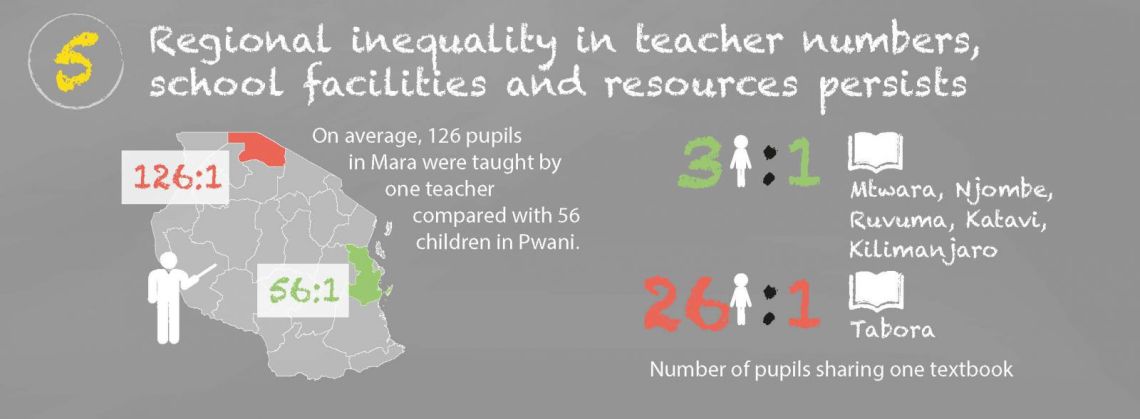Today I attended the launch of the fifth Uwezo Annual Learning Report in Dar es Salaam. Uwezo is an initiative supported by the East African charity Twaweza that monitors the basic literacy and numeracy levels of 5-16 year olds in Uganda, Kenya and Tanzania through a household-based survey and independent learning assessments.
Since the introduction of the Millennium Development Goals there has been a huge increase in primary school attendance in Tanzania with net enrolment increasing from 57% in 2000 to 90% in 2013. However, improved attendance is not synonymous with better learning outcomes.
The aim of Uwezo’s survey is to collect data on the quality of learning in Tanzania that can be used to identify ‘what can and should be done to secure the right of every Tanzanian child to quality education by 2030.’

Uwezo carried out Kiswahili, English and Numeracy learning assessments in 1,341 areas across 50 districts, assessing 32,694 children and 1,309 public primary schools. The assessments were designed to assess students’ ability to complete work to a primary standard 2 level (UK/US year/grade 3).
The resulting data is wide-ranging and invaluable for anyone considering how education standards can be improved in Tanzania.
Included in the report are several positive changes. For example the textbook to pupil ratio has improved significantly since the previous year from a national average of 1:30 in 2013 to 1:8 in 2014.

However, the report also highlights the immense challenges in education that the government faces. For example, the pupil-teacher ratio is high and getting worse; in 2013 it was 40:1, but this had increased to 83:1 by 2014. These large class sizes are a symptom of higher enrolment without adequate teacher capacity. Listed below are some sections that I found particularly interesting or surprising:
- 44% of Standard 7 pupils (the final year of primary school) failed the English assessment. This means they were unable to complete work set at a Standard 2 level. This is particularly problematic given the fact that Tanzania has English-medium secondary education. A far higher percentage certainly have a standard far below that necessary to achieve well at secondary school.
- Teacher absenteeism was found to be extremely high. On the day of the Uwezo assessments, 31% of teachers were absent. In some regions absenteeism was as high as 58%.
- The survey found there to be an extreme lack of toilets in schools. On average, 125 girls were sharing one pit latrine – more than six times the recommended ratio of 20:1 in the Tanzanian government’s National Education and Training Policy. In research I have previously carried out the impact of poor toilet facilities on attendance is significant – particularly for girls or students with disabilities.
- There are huge regional differences across many different measures. For example 81% of 9-13 year olds in Dar es Salaam passed the Kiswahili literacy test compared to just 28% in the Mara region. Similarly 55% passed the English literacy test in Arusha compared to just 6% in Rukwa. There are similar discrepancies for class size, resources and teacher absenteeism.
- There are many correlations that are similar to problems in the UK education system. For example there is a strong correlation between the level of education of parents and the corresponding attainment of their children. There is also a strong link between attainment and socio-economic background, while Tanzanian girls outperform boys in literacy assessments.
The first step to improving any education system must be a good understanding of the reality based on solid data. The Uwezo report can now be used to underpin action for educational improvement in the country.
The full report can be downloaded for free here or you can find Uwezo’s summary of key findings here.
